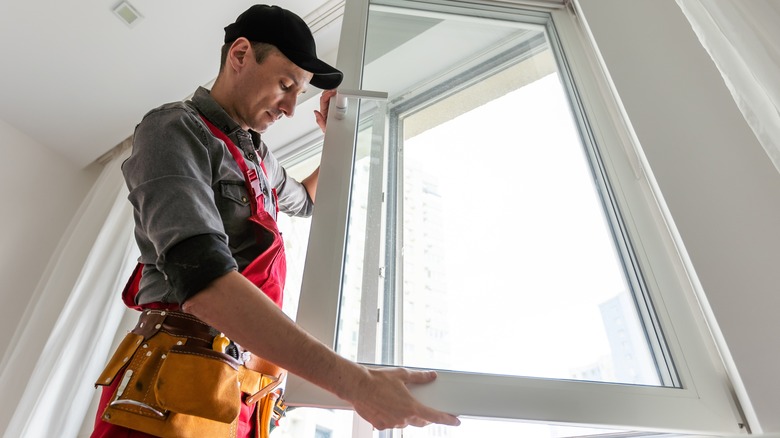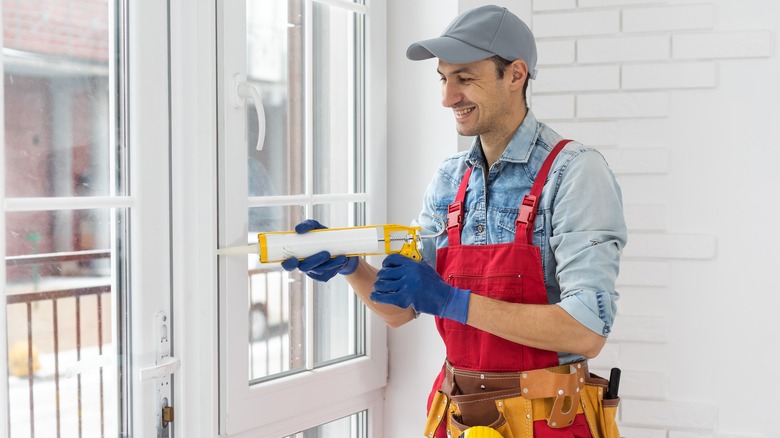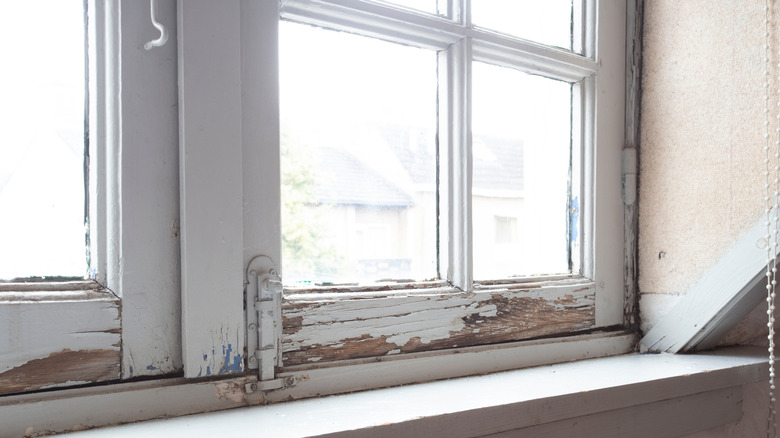Why You Should Avoid DIY Window Installations, Despite The Savings
You're standing in new construction with coffee in hand watching professionals install windows with the efficient, appealing camaraderie of a morning jobsite. It's almost a given that you'll come away with the sense that it's something you could have done to save some money. Add flashing, stick in the window and level it, some sealant, and more flashing tape ... the whole thing is finished in no time. Fast forward a few years and it's time to replace a few windows in another home, and you're pretty sure you can do it yourself. DIY is important and is something there should be more of, but in this case, it's time to hit the brakes and reconsider, because you probably shouldn't. The rewards are small and the risks are extremely high, including permanently high power bills and even catastrophic damage from water intrusion.
But what about the rewards? There are a lot of variables in figuring out how much it costs to replace a window. We analyzed nine sources of window replacement costs, representing thousands of consumer and contractor reports. The national average labor cost ranged from $138 to $363 for a standard window. Removing one outlying result from that pool left the range at $138 to $300, more in line with other reports. What's notable about these numbers is the comparatively low cost, given the amount of work involved. This weekend project for a DIYer was reported by one source to cost as little as $36 per window.
What could go wrong with DIY window replacement?
Window replacement is often not a super-complicated undertaking, but it can be an order of magnitude more challenging than installing new windows. There are two types of replacement windows: pocket and full-frame. As the name suggests, full-frame replacement windows are basically a one-to-one replacement for new construction windows, except that they don't have the nail fins that new construction have. Their installation involves removing all interior and exterior trim that would interfere with installing a new window and frame, as well as removing whatever siding is around the window on the exterior. It's quite a job and offers plentiful opportunities to leave improperly sealed gaps that can turn into disastrous problems later on.
Pocket window replacements are simpler, though still more difficult than new construction windows. These basically leave the old frame in place and replace the window sashes with an entirely new window, including a very narrow frame — as a result, pocket window replacements will cost you a few inches of window pane. If you're confident in the condition of the existing windows and don't mind replacing them with a similar style, pocket replacement is a good option and the least risky DIY approach. But if there's any question about the integrity of the existing windows, it's usually a good idea to replace them with full-frame windows so that the surrounding wall areas can be properly inspected after the window frames are removed.
What could go wrong if something goes wrong?
Any time a job could break the building envelope that isolates the inside of your home from the outside, or any time you're doing work that might expose the interior of your walls to the elements, it's wise to have a complete understanding of the process and the risks before you proceed. An amateur or incorrect installation might void your warranty, at the very least. The work is complicated and time-consuming, and professionals are better equipped to handle unexpected complexities.
But the real risks, as we've said, lie in improper installations that will be an annoyance at best, and destructive at worst. Stressed sashes can result in fogged windows, which must be replaced, and windows that are difficult to open and close might drive you to the brink of madness over time. Both are signs that your windows are increasing your heating bills, and gaps between the window frame and the window sill or the wall will result in drafts and water leaks that can destroy your energy budget and your walls. The idea of spending a weekend on some unfamiliar work just to save $300 (or $36!) and then creating a mold problem that will cost thousands of dollars (or more) to remediate just doesn't seem like a good bet. A good place to start making the decision is reviewing a comprehensive guide to renovating windows to see just how comfortable you are with the ideas, terminology, and activities that are involved.



